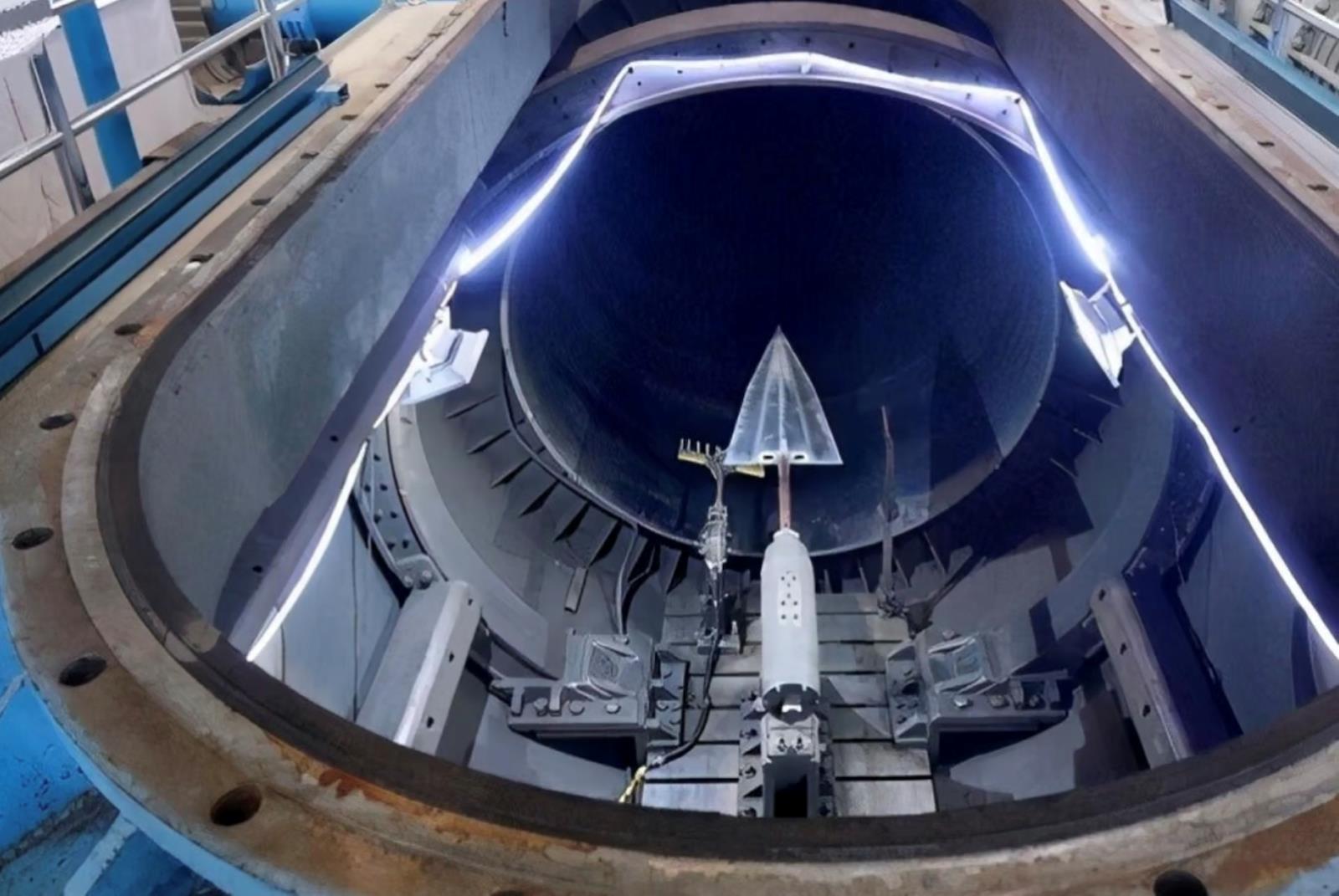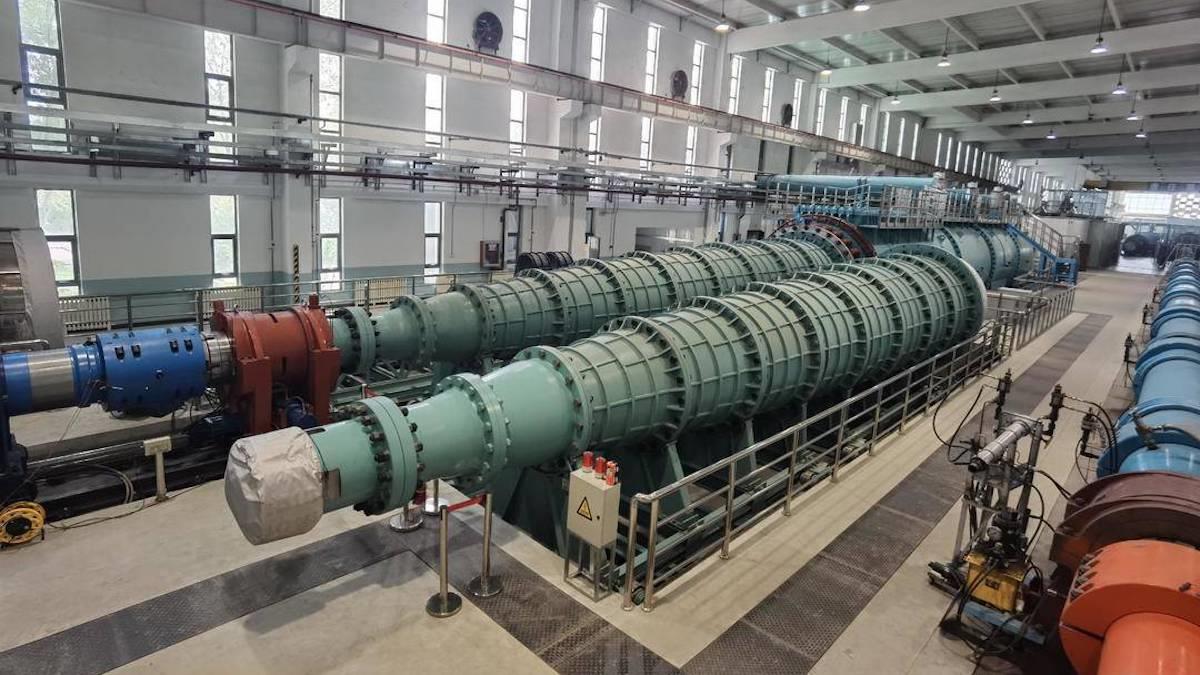(MENAFN- Asia Times) China's self-developed JF-22 wind tunnel is ready for hypersonic tests after passing a final evaluation conducted on May 30.
Based in the mountainous Huairou district north of Beijing and reputedly the world's fastest, the wind tunnel can simulate the environment in which a spacecraft re-enters the atmosphere, according to Chinese physicists quoted in media reports.
The National Natural Science Foundation of China, managed by the Ministry of Science and Technology, recently held a meeting at the Chinese Academy of Science's Institute of Mechanics in Beijing, China Central TV reported on Monday.
During the meeting, scientists confirmed that the JF-22 detonation-driven high-enthalpy shock tunnel project's performance indicators including effective test time, temperature, pressure and nozzle flow had achieved international standards.
“The goal of the JF-22 wind tunnel is to accelerate the development of a space-to-earth shuttle system,” said Jiang Zonglin, a researcher at the Institute of Mechanics and head of the wind tunnel project.“If successful, the facility can also help reduce the cost of launching satellites and spacecraft by 90%.”
The jf-22's construction began in 2018 and was completed in August 2021, according to state media. The tunnel has a length of 167 meters and diameter of four meters with an air flow range of three to 10 kilometers per second.
That makes it the largest and fastest wind tunnel in the world, capable of simulating hypersonic flight conditions up to Mach 30, according to the Institute of Mechanics, the owner of the facility, the South China Morning Post reported.
CAS researcher Han Guilai said in a lecture in 2021 that the JF-22 has the capability to simulate hypersonic flight conditions up to Mach 30 and could sustain such a runtime for an average of 130 milliseconds. LENS II, believed to be the most advanced wind tunnel in the United States, can only reach Mach 7 with a runtime of 30 milliseconds.
Han said then the JF-22, together with China's JF-12 wind tunnel, would put China“about 20 to 30 years ahead” of the West. The JF-12 passed an acceptance check in May 2012 and can simulate flights of up to Mach 7.
Hypersonic competition
However, Chris Combs, an expert in hypersonic and aeronautical engineering, told EurAsian Times that China's JF-22 claim ignores the“presence of a wide variety of decades-old facilities around the world.” He said several wind tunnel facilities around the world had already achieved speeds of Mach 20 and above.
Combs said Mach 30
speeds are only seen“during extraterrestrial return (Moon, Mars, etc.)”, meaning that“until they start launching missiles from the Moon, this isn't even really military.”
He also pointed to problems with detonation-driven shock tunnels, stating that they“alter the air chemistry to the point that the aero will no longer be representative of flight.”

The JF-12 hypersonic wind tunnel in Beijing pictured here has about one-fifth of the power output of the new JF-22. Photo: Handout
During the 1960s and 1970s, all NASA space shuttles and space launch systems were tested in the California-based Unitary Plan Wind Tunnel at the NASA Ames Research Center. The tunnel could only reach Mach 2 to 3.5. More tests were conducted by digital simulation with computational fluid dynamics (CFD) software.
Due to a lack of hypersonic wind tunnels, the US Department of Defense's Defense Innovation Unit has reportedly considered skipping wind tunnel tests and instead getting data directly from actual flight testing.
An unnamed DIU spokesperson told Breakingdefense.com last September that the DIU is seeking commercial partners to demonstrate a test aircraft prototype that can fly and maneuver at greater than Mach 5, the minimum speed of hypersonic planes and weapons.
“I was surprised to know that the DoD wants to skip the wind tunnel tests and directly launch its hypersonic planes,” a Zhejiang-based columnist wrote in an article last September.“Such a practice violates the general procedures of scientific research.”
He said only wind tunnels, not software, can simulate actual hypersonic environments. He added that a wind tunnel with Mach 33 capability is useful as space shuttles will eventually re-enter the atmosphere at the“escape velocity” of 11.2 kilometers per second without deceleration.
However, a popular IT vlogger known as GeekLead said in a June 2020 video that China chooses to
invest
in wind tunnels because it lacks its own CFD software. He said senior Chinese officials usually favor investments in hardware over software as they prefer to see tangible results.
Other commentators claimed the US uses digital simulation of hypersonic tests but to date they haven't worked as well as old-fashioned wind tunnels.
read: china's secretive mini spaceplane comes into limited view
read: china reaching for biotech breakthroughs in space
Follow Jeff Pao on Twitter at
@jeffpao3
Like this:Like Loading...

























Comments
No comment